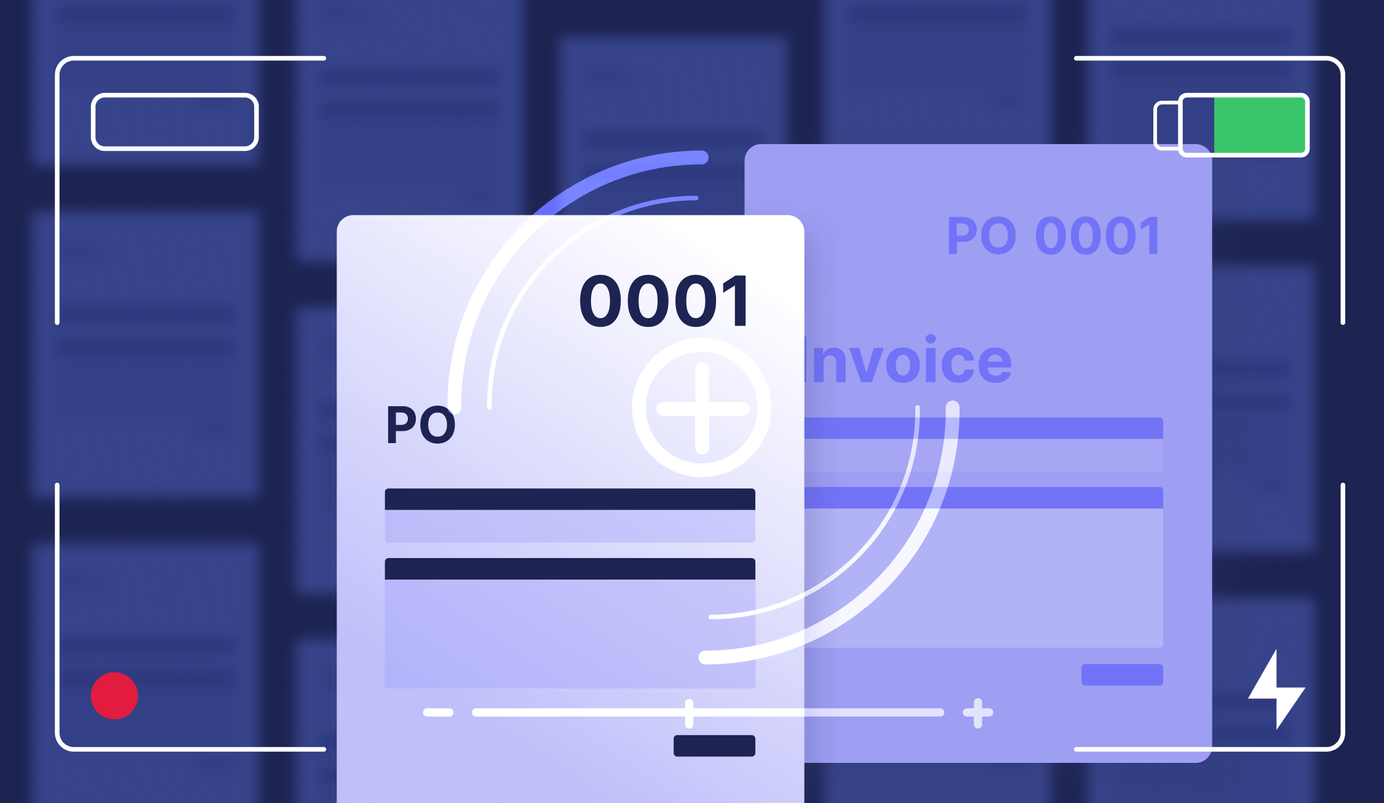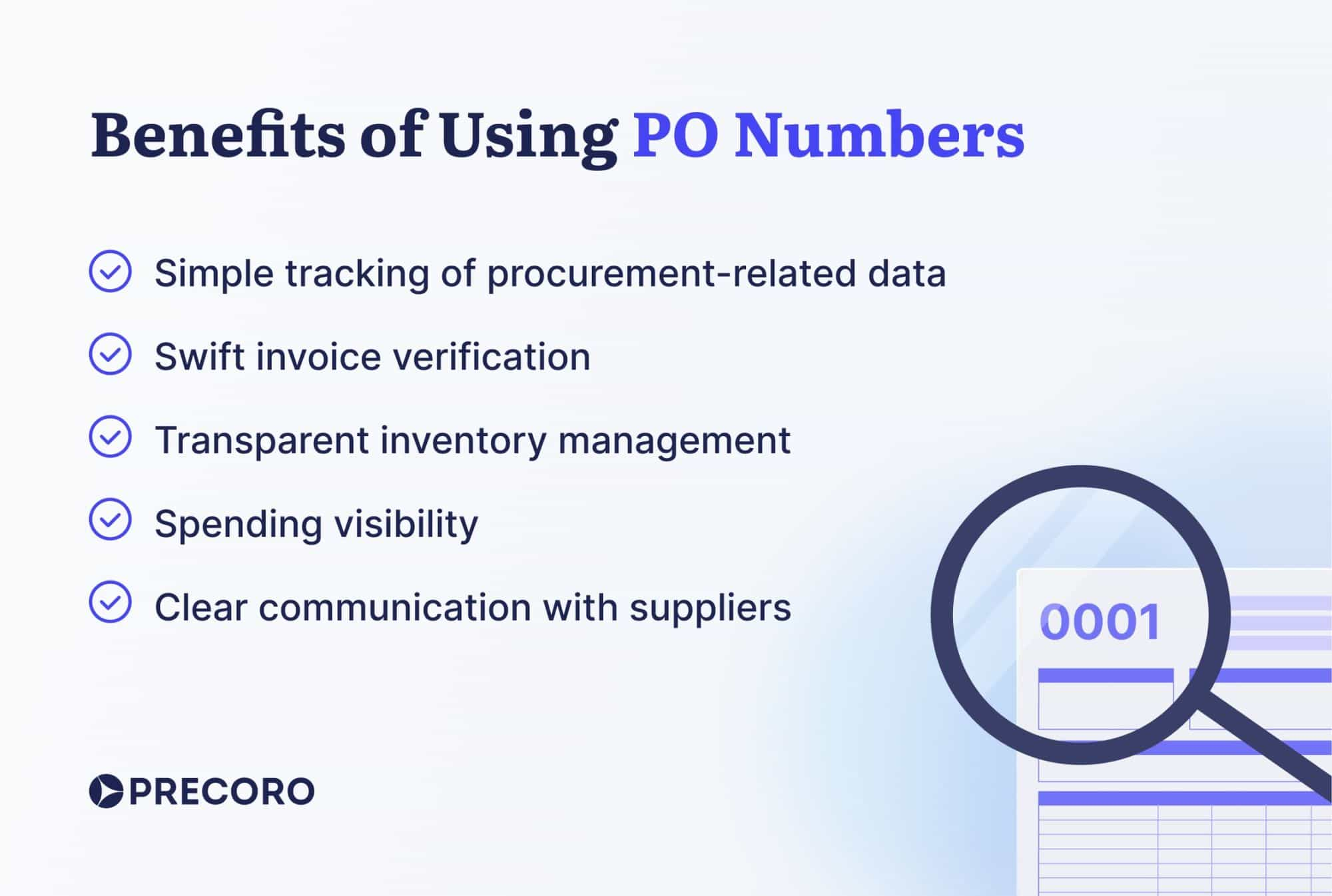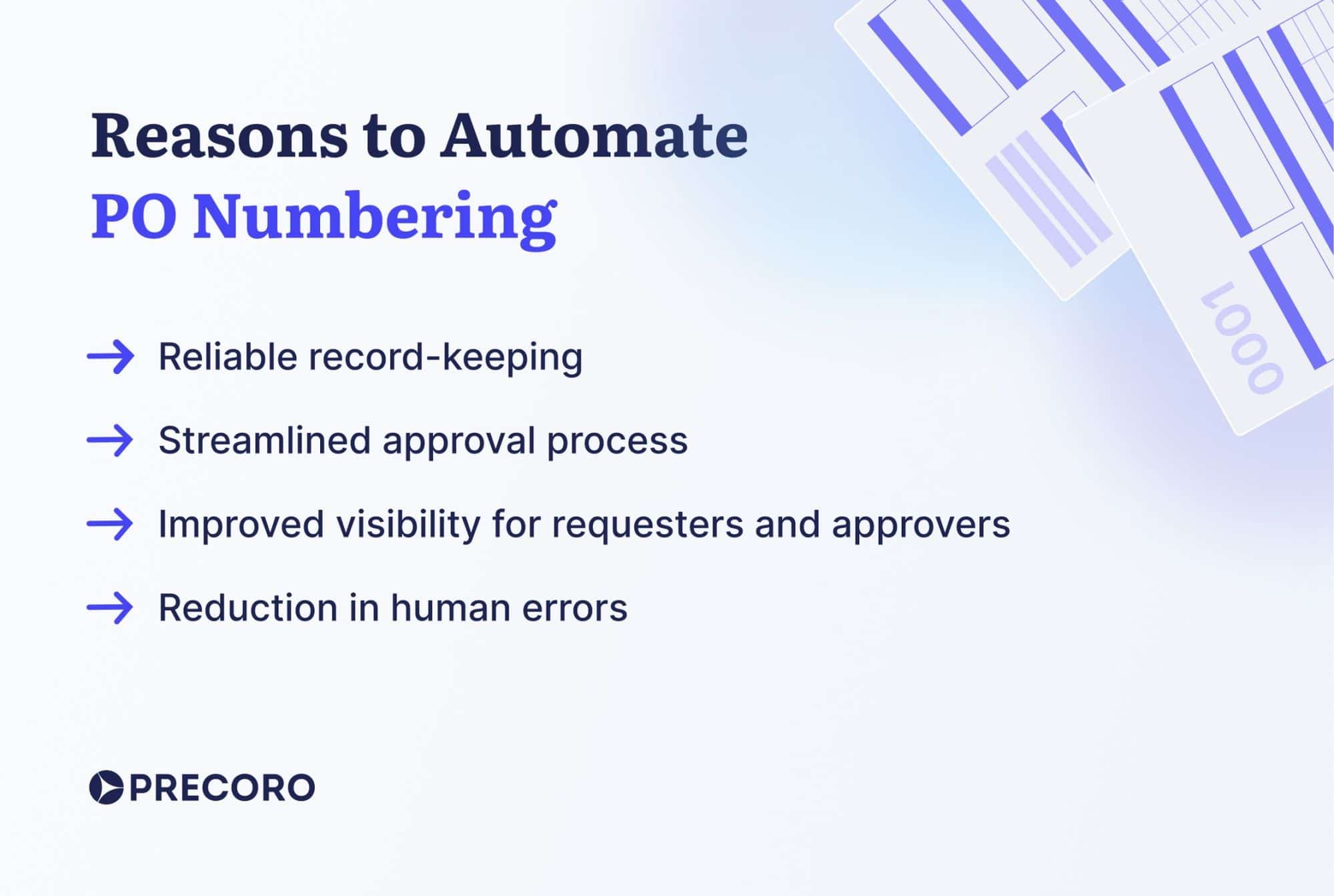
8 min read
PO Numbers in Procurement: Why Every Company Should Use Them
How can companies make their purchase orders super accessible and improve the overall tracking of ordered goods? Use PO numbers!
A purchase order (PO) is a formal request for goods or services that becomes a legally binding document once the vendor accepts it. The document is essential for smooth procurement operations. It guides vendors while they fulfill the order and aids buyers in verifying invoices and analyzing their purchases and expenses.
However, it all would be unnecessarily complicated without one seemingly small but crucial detail — the purchase order number. Read on to learn why procurement and account payable teams heavily rely on the PO number system and how to create a good one.
Keep reading to find out:
- What is a PO number?
- What are the benefits of using PO numbers?
- How do companies create a PO numbering system?
- Frequently Asked Questions
What is a PO number?
A PO number is a unique numeric or alphanumeric reference code assigned to a purchase order. The PO number is typically located on the upper part of a purchase order, often near the document’s header for easy reference.
The buyer and the seller use it to easily monitor specific items and transactions throughout the entire order process. However, the PO number has a much wider application in procurement operations.
What are the benefits of using PO numbers?
Purchase order numbers are highly important for administrative, procurement, and accounting teams for the following reasons:
Simple tracking of procurement-related data
Effective record-keeping is the backbone of a well-organized business, and a unique PO number on every purchase order plays a crucial role in this process. Essentially, it makes the document easily retrievable within a database and lets employees quickly check whether the purchase order was approved, sent to the supplier, or fulfilled.
PO numbers aren’t just for the sake of present visibility; they also make tasks more convenient in the future Picture this: you need to revisit a past purchase, maybe for auditing or simply to recall specific details. The PO number enables you to search for that historical transaction amidst the digital archives.
Swift invoice verification
The PO number is included not only on the purchase order but also on the sales invoice. This connection simplifies a crucial process known as "three-way matching," during which the invoice is compared to the related purchase order and receipt before payment. PO invoice processing ensures that all documents match up in terms of items, quantities, and prices, acting as a safeguard against fraudulent and duplicate invoices or full payment requests for partial delivery.
The PO number serves as a link between the documents, significantly enhancing the chances of detecting discrepancies and allowing employees to find related documents faster. Therefore, PO numbers minimize payment-related complications and streamline invoice verification. Those are especially important benefits, considering lengthy invoice and payment approval times are the top challenges for AP.
Transparent inventory management
PO numbers help procurement and operations teams better track their incoming goods and available inventory. Employees can use them to check what items have been ordered and delivered based on the PO numbers of completed purchase orders.
This enhanced inventory visibility is a money-saving game-changer, too. It empowers companies to avoid unnecessary expenses by conducting a quick check to see if the required items have been already ordered or are already available in their warehouse or another office, ensuring that departments aren’t spending needlessly.
Spending visibility
PO numbers help the finance team quickly access the necessary purchase orders and provide it with a comprehensive view of pending expenses. Thus, the company can have effective cash flow planning and set aside the funds required to cover these obligations.
Later in the procurement process, PO numbers can also be used to quickly access the needed purchase orders to verify and analyze historical spending. Businesses can use this data to identify potential cost-saving opportunities and negotiate more favorable terms with preferred suppliers.
Clear communication with suppliers
PO numbers streamline communication between buyers and suppliers by providing a clear reference point for all transactions. Moreover, incorporating PO numbers helps when it comes to resolving possible disputes with vendors. In case of a disagreement, both the buyer and the supplier can conveniently reference the original purchase order using the PO number.

How do companies create a PO numbering system?
PO number systems are as diverse as the businesses that employ them, and there’s no universal standard for how precisely to use them. What’s important is that the system adheres to a sequential pattern to provide each purchase order with a distinct and easily recognizable code. This unique code can be crafted manually or automatically using purchasing software. Let’s delve further into the approaches companies take to create the PO number system.
Manual approach
Usually, small companies with few purchases per month create their own purchase order templates and manually assign the PO numbers to them. Some businesses keep it fairly straightforward by starting at one and counting up from there. Others kick off with numbers like 001 or even 00001. For example, the first purchase order could be tagged as “PO 00001,” followed by the next as “PO 00002,” and so forth.
Some companies incorporate the date to make the number more detailed. For instance, the PO number for a purchase order sent on October 26, 2023, might look like "PO 10262023-000001." However, it’s not necessary, as the creation date is mentioned in the PO anyway.
The manual approach has several serious drawbacks that become more noticeable when a company starts processing lots of orders:
- A manual PO number system is prone to human errors and comes with the risk of duplication or misclassification of PO numbers.
- A manual approach is more time-consuming, as procurement or operations officers need to retrieve and cross-reference purchase orders to avoid number repetition.
- Manual systems lack data security and require additional time and effort to back up documents, which renders them more vulnerable to data loss.
Automated PO numbering
As companies scale up their operations and require more supplies, manually assigning a unique code to every order becomes unreliable and time-consuming. In response to this growing challenge, many companies choose to automate their purchase order process with PO systems.
For example, with Precoro, users can utilize convenient, customizable PO templates to generate purchase orders, and the system assigns sequential PO numbers to them automatically. Additionally, Precoro’s functionality helps businesses efficiently handle other critical aspects of procurement with the following added benefits:
- Reliable record-keeping, which extends to purchase requisitions with requisition numbers, purchase orders, invoices, and receipts. A secure repository of procurement documents enhances spend management and makes auditing easier.
- Streamlined approval process with minimized risk of unauthorized purchases and approval bottlenecks. Each order follows a predefined approval workflow, with approvers promptly notified when a new document awaits their review.
- Improved visibility for both those making purchase requests and those approving. Users can check the order status, see the available budget, monitor inventory levels, and analyze expenses.
- Reduction in human errors like accidental duplicate PO numbers or incorrect or incomplete data entry. With fewer mistakes, financial records will be more accurate, and the ordering process will be noticeably smoother.

Moreover, PO automation helps companies save money: the average cost of processing a purchase order decreases from $107 to $32 when businesses switch to software solutions.
Frequently Asked Questions
A purchase order (PO) is a document that formalizes a buyer’s intent to purchase goods or services. Once accepted by the vendor, it becomes a legally binding contract. Purchase orders include the quantities of required products or services, the billing address, payment terms, and more.
A purchase order number is a unique reference code assigned to each purchase order within a business. It can be a mix of numbers, letters, and dashes arranged to suit the company’s preferences.
The buyer assigns a unique PO number to the purchase order, which is then used by both the vendor and the buyer to swiftly locate the purchase order within their internal systems. It is used to help ensure that the order is fulfilled according to the agreed terms, that the invoice is correct, and the payment is issued for the authorized purchase.
It is recommended that vendors include the PO number on every invoice. This practice allows the buyer company to easily cross-reference it with the corresponding purchase order, helping to validate the invoice and quickly issue a payment.
Use PO numbers to the fullest
A PO number is important for tracking purchase orders, swiftly verifying invoices, streamlining payments, and analyzing spending. It’s typically placed at the top of a purchase order, ensuring visibility for both the buyer and the vendor.
The PO number system helps requesters and approvers within the company keep track of orders, verify invoices, overview pending expenses, monitor incoming inventory, and analyze historical purchases. Vendors can also include the client’s PO number on the sales invoice to streamline the payment process.
Manually assigning a PO number is common among small companies that don’t need many supplies. However, as they scale their business operations and handle a larger number of purchases, the manual approach becomes increasingly inefficient. This is primarily because it becomes more susceptible to accidental duplicate purchase order numbers, errors in data entry, and difficulties in organizing and tracking the growing volume of purchase orders.
As a result, many companies eventually opt for automated systems to streamline and increase the accuracy of their entire purchase order process. With such software, users can create purchase orders using simple templates and assign PO numbers automatically. Moreover, the best solutions have features for handling invoices, receipts, and budget management. With such modules, companies can use PO numbers to their full potential.









